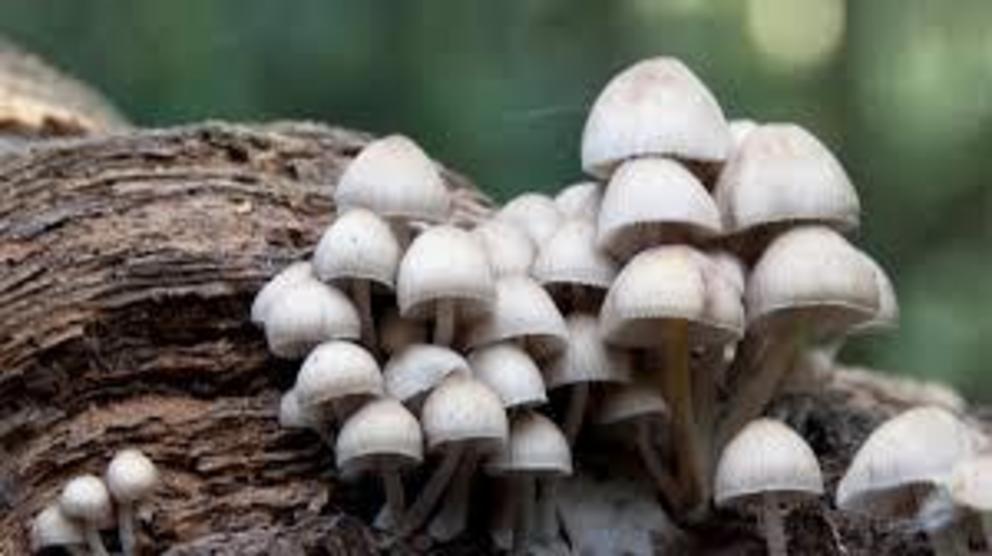Mushrooms could solve the war on plastic
Harnessing the natural rotting properties of FUNGUS could reveal how to break down waste naturally in weeks rather than years.
Fungi could help tackle some of the world's biggest challenges, such as finding clean fuels and tackling plastic rubbish, experts have claimed.
A new report estimates there are around three million species of fungi, but little is known about this 'Jekyll and Hyde' kingdom of nature.
Many species could already be under threat as a result of habitat loss, nitrogen pollution and climate change.
This could have wider impacts on the wildlife and natural systems that rely on them, according to the first study into the state of the world's fungi.
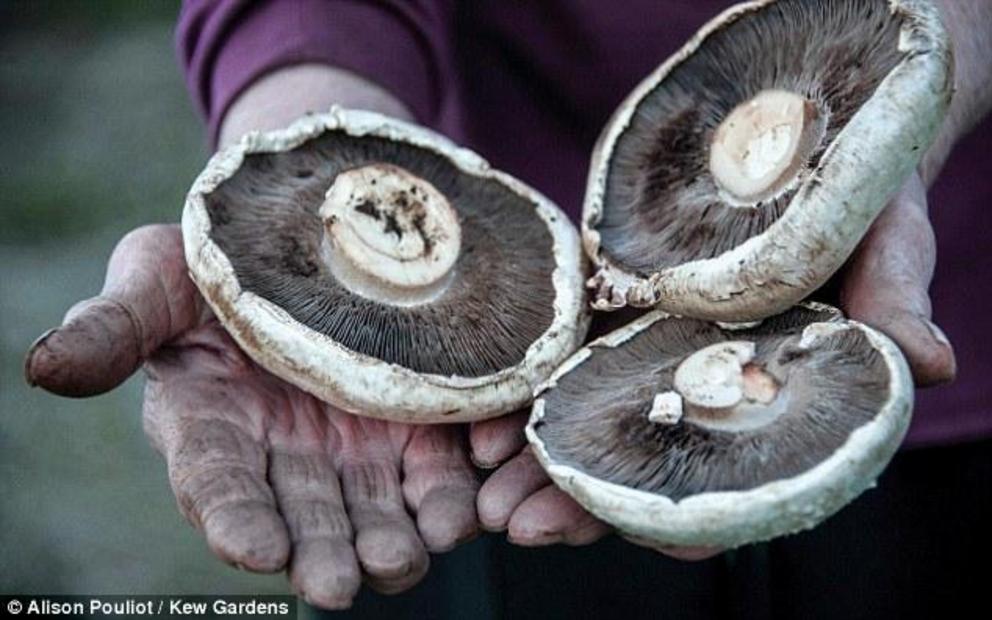
Fungi could help tackle some of the world's big challenges, such as finding clean fuels and tackling plastic rubbish, experts have said. A new report estimates there are about three million species of fungi, but little is known about this 'Jekyll and Hyde' kingdom of nature
The study was undertaken by researchers from the Royal Botanic Gardens, Kew and their report talks about a fungus found in a rubbish tip in Pakistan that is capable of breaking down plastics, such as polyester polyurethane.
It does so in weeks - rather than hundreds of years - raising hopes of new ways to tackle global plastic pollution.
Fungi living in plants can also break down molecules in plant cell walls directly into chemicals with similar properties to diesel.
This could also help make biofuels more economically and sustainable than they are at the moment.
Fungus which can grow in extremely acidic conditions and tolerate high levels of gamma radiation could help clean up sites contaminated by radioactive waste, the report said.
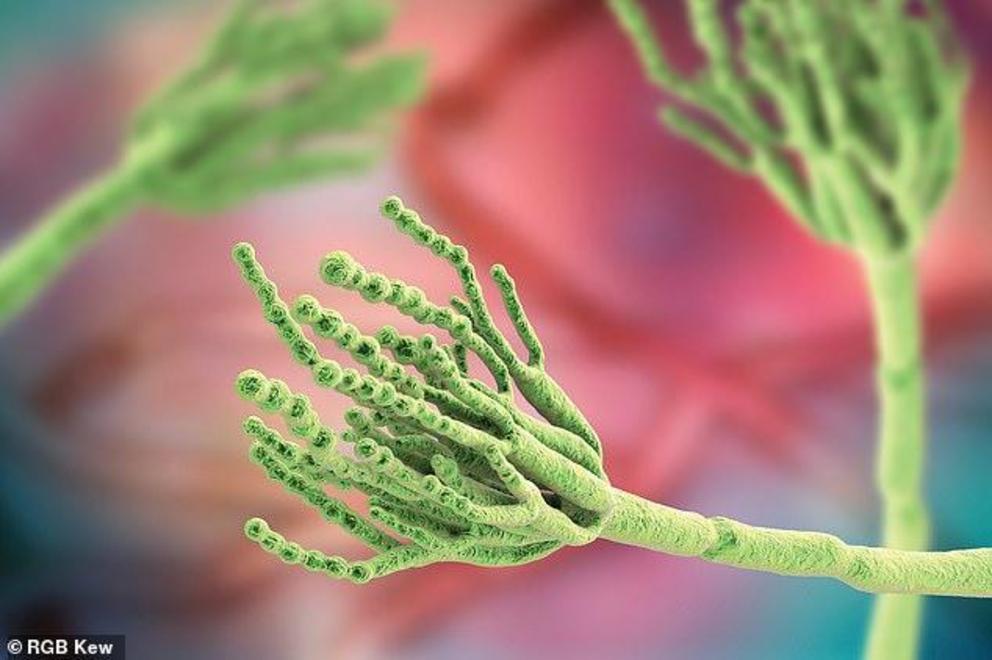
Many species could be under threat as a result of habitat loss, nitrogen pollution and climate change. Fungi Penicillium are used for production of the first antibiotic penicillin
Director of science at Kew, Professor Kathy Willis, said: 'The potential of fungi to address clearly critical problems we have is very strong.
'This report represents the first time the understanding of fungi is brought together in one document. This is an incredibly diverse, yet hidden kingdom.
'Our knowledge of fungi is so small in comparison to plants and animals.
'And yet in terms of addressing global challenges going forward, fungi may well hold many of the answers.'
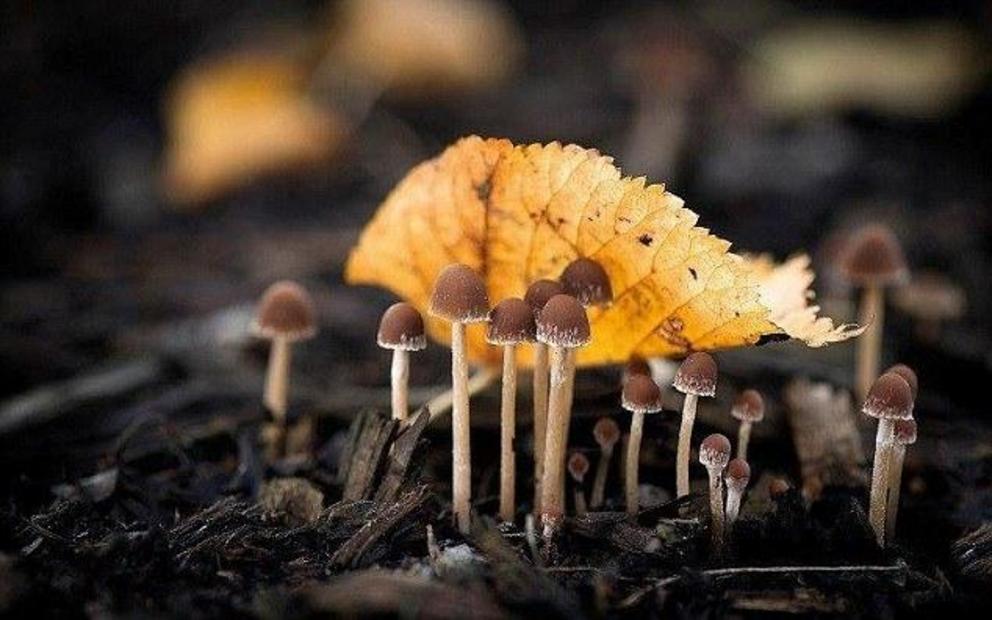
This his could have wider impacts on the wildlife and natural systems that rely on them, the first State of the World's Fungi study warned
Experts from Kew also warn that only 56 species have had their conservation status assessed for the International Union for Conservation of Nature's (IUCN) Red List of Threatened Species compared with 25,452 plants and 68,054 animals.
More than 2,000 new species of fungi were found last year, in the soil, forests and caves.
However, new micro-species were also found in diverse places including under fingernails, on a baby carrier and on oil paintings.
Analysis of a packet of porcini mushrooms from the supermarket has even revealed three new species, experts at Kew said.
They are hugely important to life, with fungi that grow around roots and help plants absorb more water and nutrients helping around 90 per cent of the world's plants thrive.
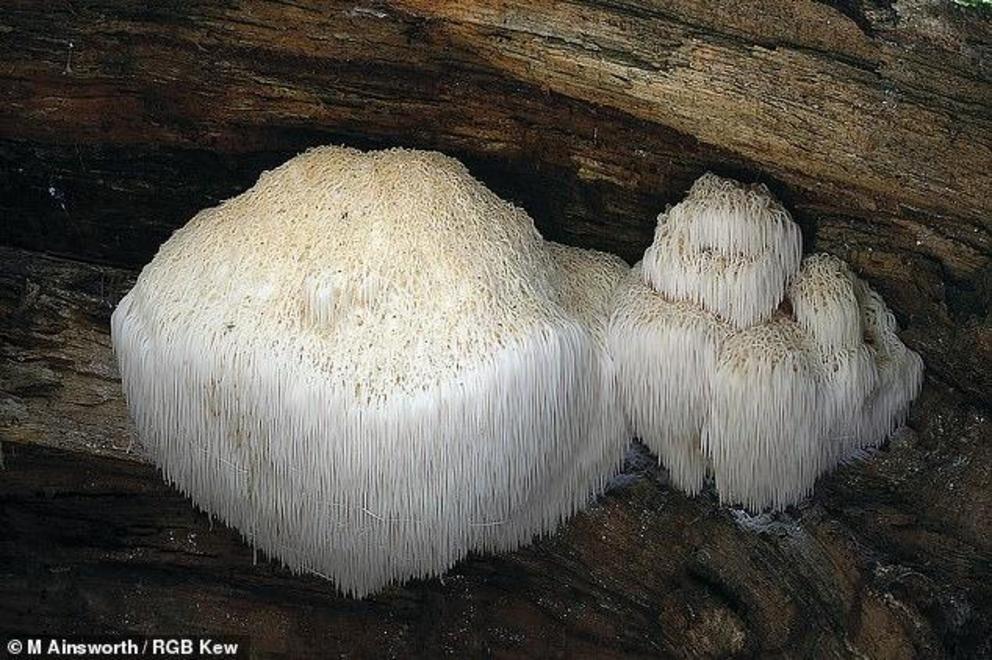
Bearded tooth fungus is protected against picking in Britain and is a conservation priority species
One new species identified in the sandy desert soils of the United Arab Emirates (UAE) could be helping lime, pomegranate and grape plants survive harsh conditions.
But they can also be among some of the most dangerous organisms, responsible for problems such as ash dieback and honey fungus.
Around 350 species are eaten by humans, from truffles to common mushrooms, meat substitutes and blue cheese, as well as products such as beer and bread which need yeast.
The market is worth £32 billion ($42bn) a year.
They also provide medicines, such as penicillin, statins and immunosuppressant drugs needed for transplants and speed up chemical processes in industry.
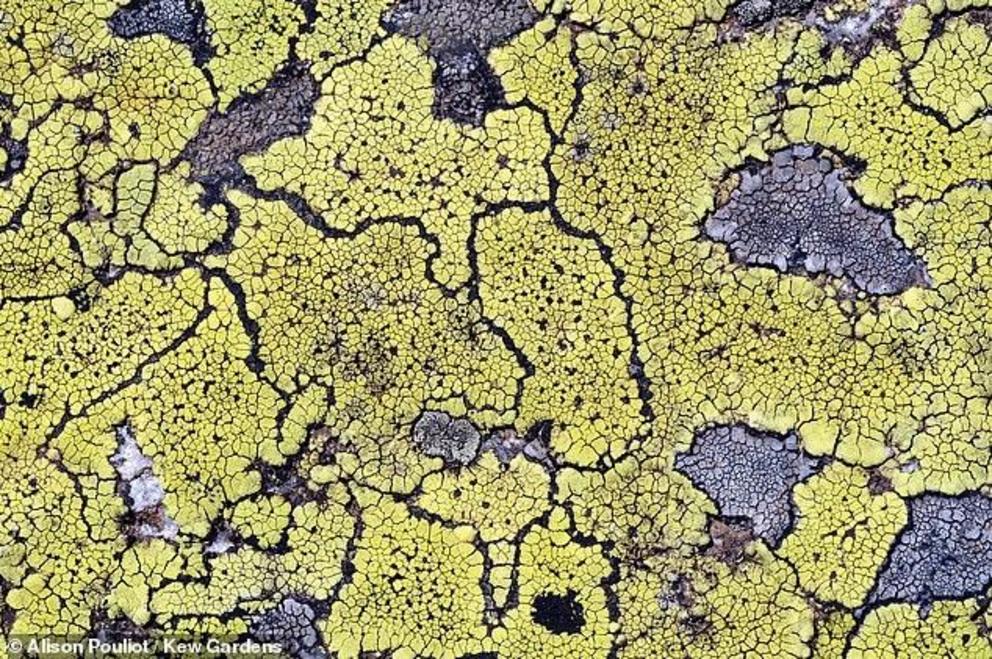
Afungus found in a rubbish tip in Pakistan which is capable of breaking down plastics, such as polyester polyurethane. Lichens such as Rhizocarpon geographicum are also part of the fungi kingdom
Professor Willis added: 'They are the Jekyll and Hyde, because they are important for all aspects of life on Earth but they are also some of the most devastating organisms to life on Earth.'
She warned that because many fungi were not easily visible, they were not valued, and therefore not conserved, while habitats such as woodland and wetland edges where they are found are being lost.
'We need to change this because with climate change many fungi are getting very stressed, they like rain, they like damp, moist environments, as things get drier and hotter, things getting lost are those key fungi', she said.
Climate change could harm beneficial species, with knock-on effects on the survival of plants and reducing the storage of carbon, while rising temperatures could also mean the spread of fungal pathogens.
But they could also help plants alleviate some of the effects of climate change such as drought and increased flooding, the report said.
Professor Willis added there was a significant lack of knowledge about the threats to fungi or how they were changing because of climate change, and more research was needed.
WHAT ARE THE OLDEST FUNGI EVER DISCOVERED?
For many years, fungi were grouped with, or mistaken for plants.
Not until 1969 were they officially granted their own 'kingdom', alongside animals and plants, though their distinct characteristics had been recognised long before that.
Yeast, mildew and molds are all fungi, as are many forms of large, mushroom-looking organisms that grow in moist forest environments and absorb nutrients from dead or living organic matter.
Unlike plants, fungi do not photosynthesise, and their cell walls are devoid of cellulose.
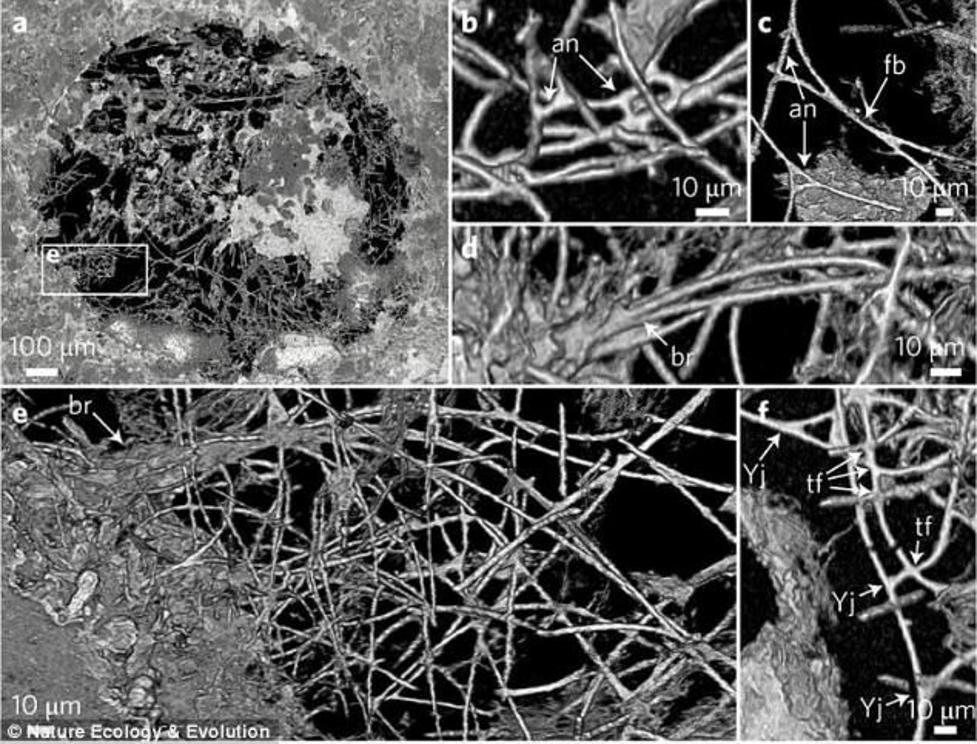
Geologists studying lava samples taken from a drill site in South Africa discovered fossilised gas bubbles, which contained what could be the first fossil traces (pictured) of the branch of life to which humans belong ever unearthed
Geologists studying lava samples taken from a drill site in South Africa discovered fossilised gas bubbles 800 metres (2,600 feet) underground.
In April 2017, they revealed that they are believed to contain the oldest fungi ever found.
Researchers were examining samples taken from drill-holes of rocks buried deep underground, when they found the 2.4 billion-year-old microscopic creatures.
They are believed to be the oldest fungi ever found by around 1.2 billion years.
Earth itself is about 4.6 billion years old.
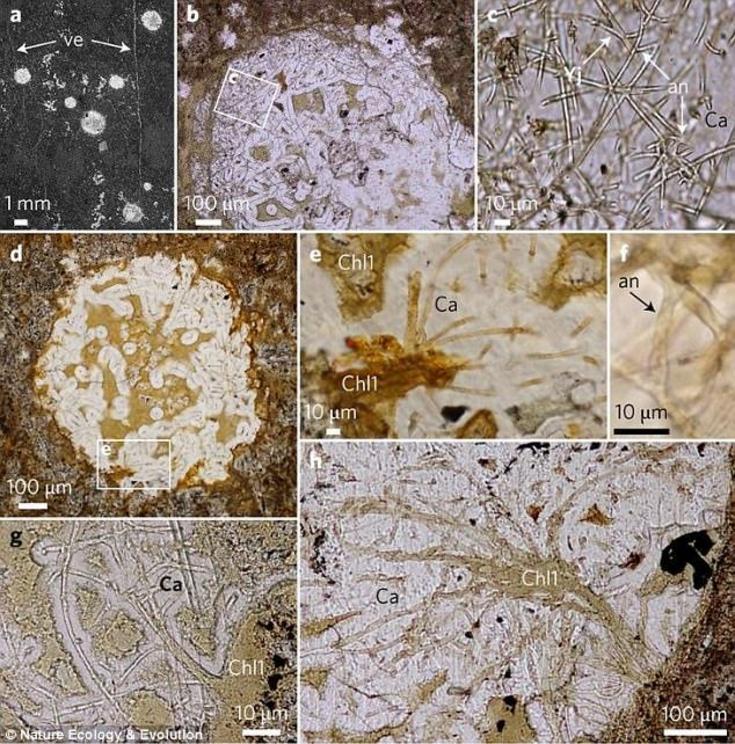
Earth itself is about 4.6 billion years old and the previous earliest examples of eukaryotes - the 'superkingdom' of life that includes plants, animals and fungi, but not bacteria - dates to 1.9 billion years ago. The fossils have slender filaments bundled together like brooms (pictured)
They could be the earliest evidence of eukaryotes - the 'superkingdom' of life that includes plants, animals and fungi, but not bacteria.
The previous earliest examples of eukaryotes - the 'superkingdom' of life that includes plants, animals and fungi, but not bacteria - dates to 1.9 billion years ago. That makes this sample 500 million years older.
It was believed that fungi first emerged on land, but the newly-found organisms lived and thrived under an ancient ocean seabed.
And the dating of the find suggests that not only did these fungus-like creatures live in a dark and cavernous world devoid of light, but they also lacked oxygen.
(another video can be accessed at source link below)
Video can be accessed at source link below.

